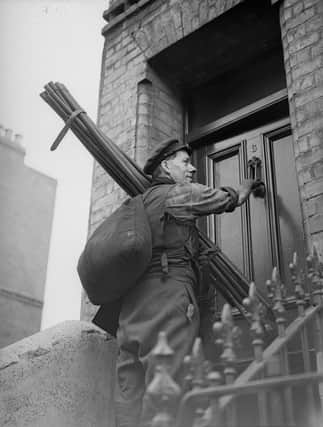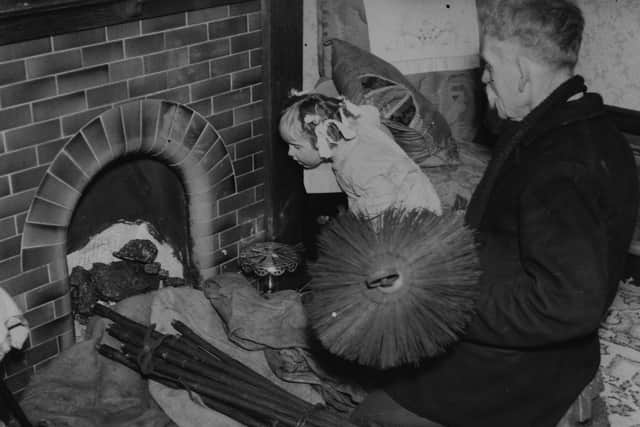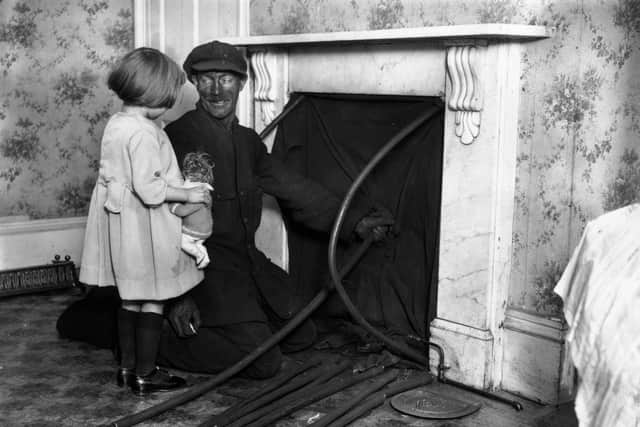When it was good luck to cross a chimney sweep


But the Clean Air Act and the advent of central heating has made the chimney sweep an increasingly rare sight, to the point where two generations have grown up with only Dick Van Dyke in Mary Poppins as a frame of reference.
These pictures from the archive recall a time when to see a sweep was considered good luck; when the covering of the best furniture to keep the soot off was an annual ritual; and when going to work with a set of brushes and extension tubes was no more unusual than carrying a bag of spanners.
Advertisement
Hide AdAdvertisement
Hide AdDespite their smiling faces, not to mention the enduring image of Mr Van Dyke hopping from roof to roof in Edwardian London summoning cartoon characters for a last chorus of Chim Chim Cher-ee, it was back-breaking, dangerous work, and by no means the exclusive province of adult males. Some of the first cases of industrial cancer were recorded amongst adolescent boys whose size was a perfect fit for the filthy, narrow chimneys without which no house was complete. Some suffocated inside them. Only in 1834 were apprentice sweeps under 10 outlawed.


Their place was taken by flexible brushes which could navigate the network of flues that connected multiple fireplaces to a single chimney – an arrangement which sidestepped the 17th century “hearth tax” that rose proportionately with the number of chimneys on a property.
Yet despite the changing times, cleaning chimneys remains a viable occupation. The National Association of Chimney Sweeps has 700 members and runs courses for new entrants to the profession.
Support The Yorkshire Post and become a subscriber today.
Your subscription will help us to continue to bring quality news to the people of Yorkshire. In return, you’ll see fewer ads on site, get free access to our app and receive exclusive members-only offers.


Advertisement
Hide AdAdvertisement
Hide AdSo, please – if you can – pay for our work. Just £5 per month is the starting point. If you think that which we are trying to achieve is worth more, you can pay us what you think we are worth. By doing so, you will be investing in something that is becoming increasingly rare. Independent journalism that cares less about right and left and more about right and wrong. Journalism you can trust.
Thank you
James Mitchinson
Comment Guidelines
National World encourages reader discussion on our stories. User feedback, insights and back-and-forth exchanges add a rich layer of context to reporting. Please review our Community Guidelines before commenting.